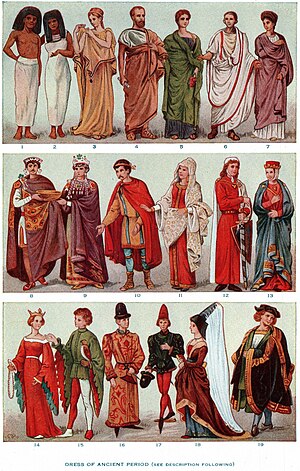Take the Example of Clothing
Let's begin at the pulpit and one immediately notes at least 5 variants:1. Those who stick to orthodox robes and cassocks or sacralized color definitions (e.g. white)
2. Those who stress on wearing business suits or traditional suits
3. Those who like to wear designer and more trendy clothes
4. Those who like to wear casuals.
5. Those who are comfortable with two or more of the combinations above
(a) Those who are comfortable with 1-4
(b) Those who are comfortable with 2-4
(c) Those who are comfortable with 1,2,4 but not 3
(d) Those who are comfortable with 2,3,4 but not 1
(e) Those who are comfortable with only 2 and 4.
(f) Those who are comfortable with only 1 and 2.
(g) Those who stick to 2 and 3 or 3 and 4.
It is not attempted to state here who is right and who is wrong. However, it will become evident to the reader by now that the issue of law and grace is basic even to the kind of dress we choose to wear to church.
Now, while it does seem that the sacralizers (1) are particularly legalistic, the fact is that even those who maintain that only casuals "ought" to be worn to church are not less legalistic. On the other hand, there are those who look at dress in a more instrumental manner, as something to be used to suit some purpose. The wiser instrumentalists also know that dress-forms as cultural forms also communicate meanings and are cautious how they dress up. There are also revolutionaries who dress up to explicitly and blatantly communicate their revolt against some legalistic system. Then, there are the popularists who dress up in order to have a trendy following or to create a brand.
"Do not be conformed to this present world, but be transformed by the renewing of your mind, so that you may test and approve what is the will of God – what is good and well-pleasing and perfect." (Rom.12:2)
"those who use the world as though they were not using it to the full. For the present shape of this world is passing away."(1Cor.7:31)
"to dress in suitable apparel, with modesty and self-control." (1Tim.2:9)
Suitable apparel refers to dress that suits the occasion and is comfortable to wear in the conditions. Modesty implies that the dress we wear must not be embarrassing and must protect shame, not be shameless and exposing privacy; dress must be honorable. Self-control means that our dress must not be provocative or appealing to the flesh but must exhibit self-control, temperance, and sound mind.


